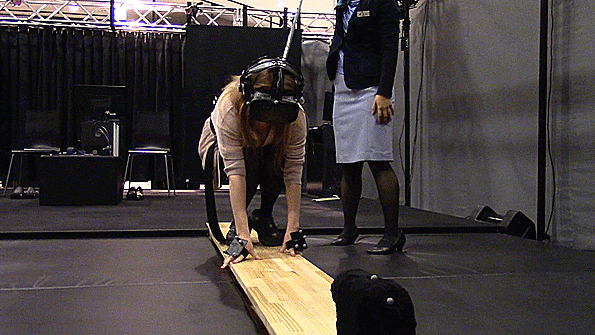
Two of RocketNews24’s VR virgins get to grips with virtual reality—but does the new technology live up to the hype?
My fellow RocketNews24 writer Preston and I recently had the opportunity to try out a handful of virtual reality setups at a special event being held for a limited time in Odaiba, Tokyo, called VR Zone Project i Can. While I’d watched plenty of hilarious videos of my fellow reporters and YouTubers wearing silly VR goggles and freaking out as various digital creatures lunged at them, none of it had prepared me for the reality of virtual reality, and I still wasn’t quite sure what to expect.
“I still wasn’t convinced that I’d fall for it.”
The word “immersive” is often used when virtual reality is discussed in print and online. In truth, this is something I’d always scoffed at, writing it off as a buzzword thrown around by those in the industry and then latched on to by the media, but it turns out that is exactly how I would describe my own VR experience. Even as I walked into the room and heard the headset-wearing attendees screeching and laughing around me, I still wasn’t convinced that I’d fall for it. I’ve played video games for decades—there’s no way my brain would be tricked into thinking that I was anywhere but an exhibition hall with a plastic box strapped to my face.
Oh boy, was I wrong.
Now that you’ve had a good laugh at our reactions, let’s get down to the nitty-gritty.
We were given an hour and a half to try out the six experiences on offer, and we managed to get through four of them. (The only two we missed out on were train and racing simulators, which probably wouldn’t have made for such embarrassing captivating footage.) You pay on a per-play basis at the event using a card that you can charge at stations within the area, with each game costing between 700 and 1,000 yen (US$6.50–$9.00) per try.
▼ The VR lineup
▼ Blade-wielding nurses with glowing eyes! What could possibly be scary about that?
Perhaps naively, we opted for the horror experience first, a grueling 12-minute-long “ride” through an abandoned hospital—or, more accurately, a dark, terrifying building filled with blood, guts, grotesque creatures, and heart-stopping jump-scares. You play as a character in a wheelchair, using joysticks to move forwards and backwards, although you’re essentially on a set path, so the experience is similar to journeying through a haunted house.
“I felt trapped in the game”
Before settling into our seats, we were warned by the booth attendant that the experience was most definitely not for the faint of heart, and she wasn’t kidding. The moment the headset and earphones were placed on my head, I felt trapped in the game. Moving slowly past the grisly set-pieces akin to something out of a Saw movie, I felt completely cut off from the real world to the point that the virtual one very quickly felt like my new reality. When you’re playing a video game, no matter how scary it is, you’re still somewhat removed from what’s going on on the screen, but that feeling of distance shrinks considerably when it comes to VR. The sense of immersion is very real.
Okay, confession time: we both called it quits less than half way into the game! For a very first experience with VR I think we overstretched ourselves a little! Suffice it to say, if you’re not a fan of horror games to begin with, you’ll want to steer well clear of anything remotely scary on VR.
My second experience was a skiing simulator, which involved standing on a machine similar to a cross-trainer at the gym and leaning left and right to steer. Again, the headset convinced my brain that I really was in the virtual environment, suddenly atop a snowy mountain and whizzing through snowdrifts, to the point that I swear I actually began to feel cold! Unfortunately I wasn’t very good at controlling my skis and it turned out to be almost as terrifying as the actual horror game as I crashed into rocks and sailed off cliffs. However, I have a feeling this might have more to do with the fact that I’ve never actually skied in my life, so I’m sure it’ll be great fun for avid skiers who are missing the slopes.
Upon removing the headset, however, I have to admit I felt a bit queasy. The issue of nausea often comes up when discussing virtual reality, and eliminating it is something the hardware’s designers have worked hard to achieve, so it was something I was wary of going in. It wasn’t too much of a problem for me in-game, however, and mostly set in after the headset was off and my brain readjusted to longer being in perceived motion. This is definitely something to watch out for if you have a tendency to get sick on theme park rides, but the benefit here is that you’re not stuck until the ride is over; you can turn it off at any time if it gets to be too much, and the feeling passed quite quickly afterwards.
▼ Another of the VR experiences we tried—this one putting us in control of a giant mecha.
The headset used for all the different setups at Bandai Namco’s event is the HTC Vive, the model that received the full backing of Valve, the same company that brought us the Steam software distribution system. In truth, found it quite heavy and it sometimes pressed down on my noise to the point I had to breathe through my mouth—something that was especially troublesome in the mecha piloting/shooting game where you had to move your head to aim at the targets. Still, at least said game was, breathing issues aside, an enjoyable rather than a white-knuckle experience, plus it included a rather busty virtual anime lady helping you out with your mission (I’m sure there are many games in the works that will allow you to get more intimate with characters like this!).
“All was well and good until … CRACK! half of the plank snapped off.”
Probably the most bizarrely realistic sensation of the day came from the seven-minute-long “walk the plank” experience we saw in Bandai Namco’s promotional video last month. The game puts you in an elevator that shuttles you up to the top of a high-rise building where there is, inexplicably, nothing but a wooden plank sticking out over the ground far below, with a tiny cat sitting at the end of it awaiting rescue. It was my job to step out onto the plank—in both the virtual world and the real one—and inch my way towards the kitty (a real-world toy with sensors pinned to it) without falling off.
All was well and good until I had the “cat” in my hands, and then CRACK! half of the plank snapped off, leaving me with mere inches of wood to balance on. Cue being stuck at the end for a while, too scared to even turn around. Logically, I knew there was absolutely no danger, and yet I couldn’t override my base instincts to just freeze and stay where I was, lest I plummet to my certain death.
Overall I was blown away by my first virtual reality experience and, now that I have an idea of what to expect, I would jump at the chance to go back again. After finally trying VR for myself, I’m definitely interested in getting my hands on a headset for my own personal use, whether it be the HTC Vive, an Oculus Rift, or Sony’s Playstation VR headset. That being said, at this stage I’m still a bit concerned about the headsets becoming little more than something to whip out during parties, a gadget that I’d pull out when friends are over and, while we’d no doubt have a blast, never feel the need to use the rest of the time. What I experienced at Bandai Namco’s event is of course way beyond what the average home user will be getting, regardless of which headset they choose, what with the elaborate setups and specialized equipment. But I could totally see an event like this being made into a permanent attraction and becoming the game center for a new generation, where you can hang out at the weekend and experience the thrills of virtual reality without having to drop vast amounts of cash—after all, even the most budget-friendly option, PlayStation VR, is far from “cheap” at US$399.
Will virtual reality become a permanent part of our homes in the near future? Only time, and the quality of the software, will tell. Even so, it’s definitely true what they say about this new technology: you really have to experience virtual reality for yourself to truly appreciate it.
VR Zone: Project i Can experience will run until October and operates on a reservation-only basis. It’s definitely popular, so make your booking now to avoid disappointment! Reservations can be made online at the Project i Can website (Japanese only).
Photos & video © RocketNews24

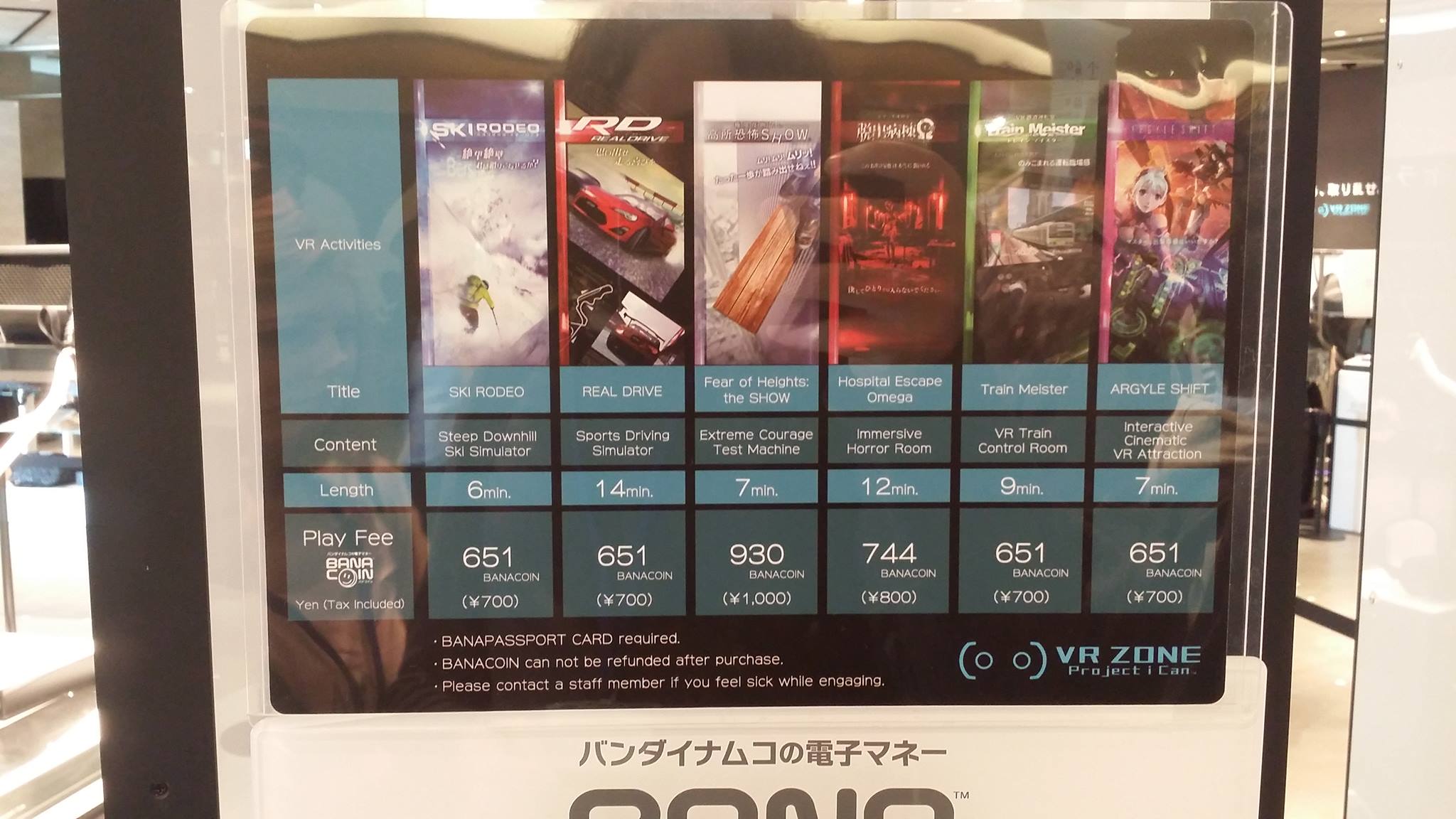
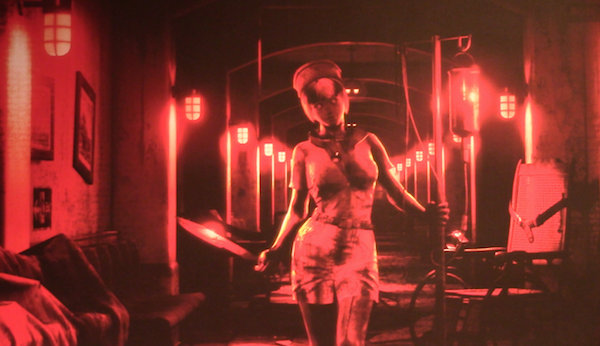
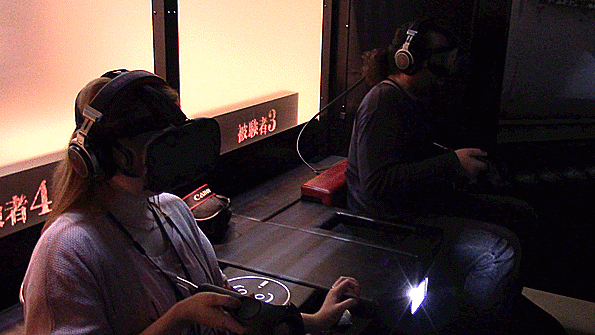
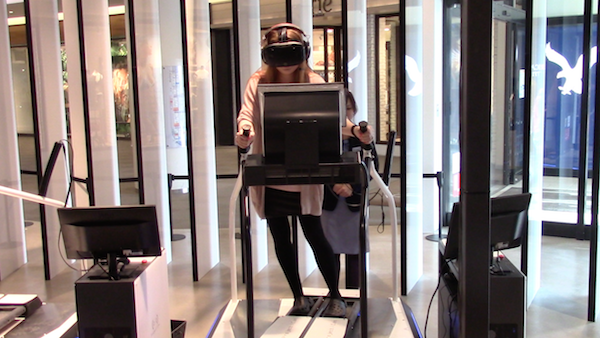

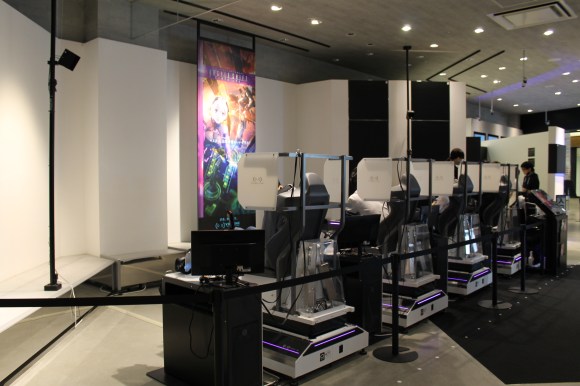
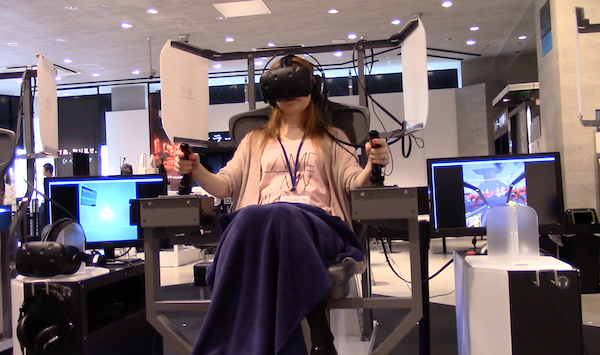
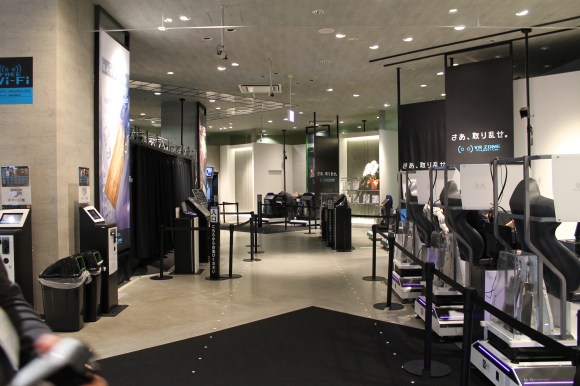
 Bandai Namco announces plans to open virtual reality experience center
Bandai Namco announces plans to open virtual reality experience center Soon, you’ll be able to play Pac-Man in virtual reality for just a couple of bucks
Soon, you’ll be able to play Pac-Man in virtual reality for just a couple of bucks Mario Kart makes the leap to virtual reality at new Tokyo VR entertainment center【Video】
Mario Kart makes the leap to virtual reality at new Tokyo VR entertainment center【Video】 Experience Doraemon’s Anywhere Door in virtual reality【 Video】
Experience Doraemon’s Anywhere Door in virtual reality【 Video】 Evangelion virtual reality game in Tokyo will let fans live the dream of piloting an Eva Unit
Evangelion virtual reality game in Tokyo will let fans live the dream of piloting an Eva Unit We found possibly the quietest Japanese-style hotel in Tokyo’s bustling Shinjuku district
We found possibly the quietest Japanese-style hotel in Tokyo’s bustling Shinjuku district Studio Ghibli releases new anime calendars for 2026 with heartwarming fan service
Studio Ghibli releases new anime calendars for 2026 with heartwarming fan service Chocolate-covered shrimp snacks make a comeback in Japan this winter
Chocolate-covered shrimp snacks make a comeback in Japan this winter 7 great places to see Mt. Fuji from without having to climb it
7 great places to see Mt. Fuji from without having to climb it How much difference does the choice of mold make in fermenting food?
How much difference does the choice of mold make in fermenting food? Japan’s oldest largetooth sawfish in captivity back on display in Mie Prefecture
Japan’s oldest largetooth sawfish in captivity back on display in Mie Prefecture Muji cake mania! Which of the 23 flavors of cake they sell are the best?
Muji cake mania! Which of the 23 flavors of cake they sell are the best? This French toast recipe that uses ice cream will knock your pajamas off【SoraKitchen】
This French toast recipe that uses ice cream will knock your pajamas off【SoraKitchen】 Eight Ways You Really, Really Shouldn’t Use a Japanese Toilet
Eight Ways You Really, Really Shouldn’t Use a Japanese Toilet Starbucks Japan unveils new Sakura Frappuccino for cherry blossom season 2025
Starbucks Japan unveils new Sakura Frappuccino for cherry blossom season 2025 Starbucks Japan ready to get Year of the Horse started with adorable drinkware and plushies【Pics】
Starbucks Japan ready to get Year of the Horse started with adorable drinkware and plushies【Pics】 7-Eleven Japan’s ramen-cooking robot whipped us up a bowl of noodles【Taste test】
7-Eleven Japan’s ramen-cooking robot whipped us up a bowl of noodles【Taste test】 Lacquerware supplier to emperor of Japan and Pokémon team up for new tableware
Lacquerware supplier to emperor of Japan and Pokémon team up for new tableware Cyberpunk anime meets traditional culture in Ghost in the Shell gold leaf Japanese changing screens
Cyberpunk anime meets traditional culture in Ghost in the Shell gold leaf Japanese changing screens Japan may add Japanese language proficiency, lifestyle classes to permanent foreign resident requirements
Japan may add Japanese language proficiency, lifestyle classes to permanent foreign resident requirements Hello Kitty Choco Egg figures are an adorable trip through three periods of Japanese pop culture【Pics】
Hello Kitty Choco Egg figures are an adorable trip through three periods of Japanese pop culture【Pics】 Japan’s otoshidama tradition of giving kids money at New Year’s gets a social welfare upgrade
Japan’s otoshidama tradition of giving kids money at New Year’s gets a social welfare upgrade Starbucks Japan releases new zodiac chilled cup drink for 2026
Starbucks Japan releases new zodiac chilled cup drink for 2026 Can a dirty butthole make you filthy rich in Japan? We’re starting a New Year’s lottery experiment
Can a dirty butthole make you filthy rich in Japan? We’re starting a New Year’s lottery experiment 7-Eleven Japan starts new temporary luggage storage service in over 300 branches
7-Eleven Japan starts new temporary luggage storage service in over 300 branches Disillusionment at Tsukiji’s tourist-target prices led us to a great ramen restaurant in Tokyo
Disillusionment at Tsukiji’s tourist-target prices led us to a great ramen restaurant in Tokyo Starbucks teams up with 166-year-old Kyoto doll maker for Year of the Horse decorations【Photos】
Starbucks teams up with 166-year-old Kyoto doll maker for Year of the Horse decorations【Photos】 Tokyo considering law requiring more trash cans following litter increase in heavily touristed area
Tokyo considering law requiring more trash cans following litter increase in heavily touristed area Tokyo’s Tsukiji sushi neighborhood asks tour groups to stay away for the rest of the month
Tokyo’s Tsukiji sushi neighborhood asks tour groups to stay away for the rest of the month Nintendo’s Kirby now delivering orders at Kura Sushi restaurants, but not in Japan
Nintendo’s Kirby now delivering orders at Kura Sushi restaurants, but not in Japan Tokyo event lets you travel back in time, for free, to celebrate 100 years since Showa era start
Tokyo event lets you travel back in time, for free, to celebrate 100 years since Showa era start Sanrio theme park in Japan announces plans to expand into a Sanrio resort
Sanrio theme park in Japan announces plans to expand into a Sanrio resort Stamina-destroying “Paralysis Noodles” are Tokyo’s newest over-the-top ramen innovation
Stamina-destroying “Paralysis Noodles” are Tokyo’s newest over-the-top ramen innovation Survey asks foreign tourists what bothered them in Japan, more than half gave same answer
Survey asks foreign tourists what bothered them in Japan, more than half gave same answer Japan’s human washing machines will go on sale to general public, demos to be held in Tokyo
Japan’s human washing machines will go on sale to general public, demos to be held in Tokyo Japan’s deadliest food claims more victims, but why do people keep eating it for New Year’s?
Japan’s deadliest food claims more victims, but why do people keep eating it for New Year’s? We deeply regret going into this tunnel on our walk in the mountains of Japan
We deeply regret going into this tunnel on our walk in the mountains of Japan Studio Ghibli releases Kodama forest spirits from Princess Mononoke to light up your home
Studio Ghibli releases Kodama forest spirits from Princess Mononoke to light up your home Major Japanese hotel chain says reservations via overseas booking sites may not be valid
Major Japanese hotel chain says reservations via overseas booking sites may not be valid Put sesame oil in your coffee? Japanese maker says it’s the best way to start your day【Taste test】
Put sesame oil in your coffee? Japanese maker says it’s the best way to start your day【Taste test】 No more using real katana for tourism activities, Japan’s National Police Agency says
No more using real katana for tourism activities, Japan’s National Police Agency says Starbucks Japan reveals new sakura drinkware collection, inspired by evening cherry blossoms
Starbucks Japan reveals new sakura drinkware collection, inspired by evening cherry blossoms Updated cherry blossom forecast shows extra-long sakura season for Japan this year
Updated cherry blossom forecast shows extra-long sakura season for Japan this year Japanese gamer shares PlayStation VR experience at virtual anime idol concert
Japanese gamer shares PlayStation VR experience at virtual anime idol concert You can now hang out with Totoro and explore Studio Ghibli worlds in virtual reality
You can now hang out with Totoro and explore Studio Ghibli worlds in virtual reality Dragon Quest virtual reality attraction opens in Tokyo, and we join the adventure
Dragon Quest virtual reality attraction opens in Tokyo, and we join the adventure VR photography exhibit held in virtual reality by Japan’s Virtual Rights organization
VR photography exhibit held in virtual reality by Japan’s Virtual Rights organization PlayStation VR user finds, shares ways of peeping at panties in schoolgirl tutor game【Video】
PlayStation VR user finds, shares ways of peeping at panties in schoolgirl tutor game【Video】 Newsflash: Sony unveils “Project Morpheus”, new virtual reality headset for PlayStation 4
Newsflash: Sony unveils “Project Morpheus”, new virtual reality headset for PlayStation 4 Gamers can become Pac-Man with new VR attraction in Tokyo【Video】
Gamers can become Pac-Man with new VR attraction in Tokyo【Video】 Remember: virtual reality will make horror games way, way scarier【Video】
Remember: virtual reality will make horror games way, way scarier【Video】 Most realistic Dragon Ball kamehameha simulator ever ready to go at VR Zone Shinjuku
Most realistic Dragon Ball kamehameha simulator ever ready to go at VR Zone Shinjuku Experience Akihabara Station in a VR world, then ride the train to a virtual marketplace!
Experience Akihabara Station in a VR world, then ride the train to a virtual marketplace! Virtual girlfriend adult game developer switches gears with super-customizable VR boyfriend game
Virtual girlfriend adult game developer switches gears with super-customizable VR boyfriend game Lonely Japanese gamers giddy over the prospect of getting to smell girls in VR titles
Lonely Japanese gamers giddy over the prospect of getting to smell girls in VR titles The new PlayStation VR comes with an adorable miniature PlayStation 4
The new PlayStation VR comes with an adorable miniature PlayStation 4 Ultimate VR game capsule tickles players’ senses, lets them enjoy the scent of frolicking girls
Ultimate VR game capsule tickles players’ senses, lets them enjoy the scent of frolicking girls Take on Godzilla yourself in virtual reality at new attractions in Osaka and Tokyo
Take on Godzilla yourself in virtual reality at new attractions in Osaka and Tokyo Tekken producer explains virtual reality girl demo ‘Summer Lesson’
Tekken producer explains virtual reality girl demo ‘Summer Lesson’
Leave a Reply